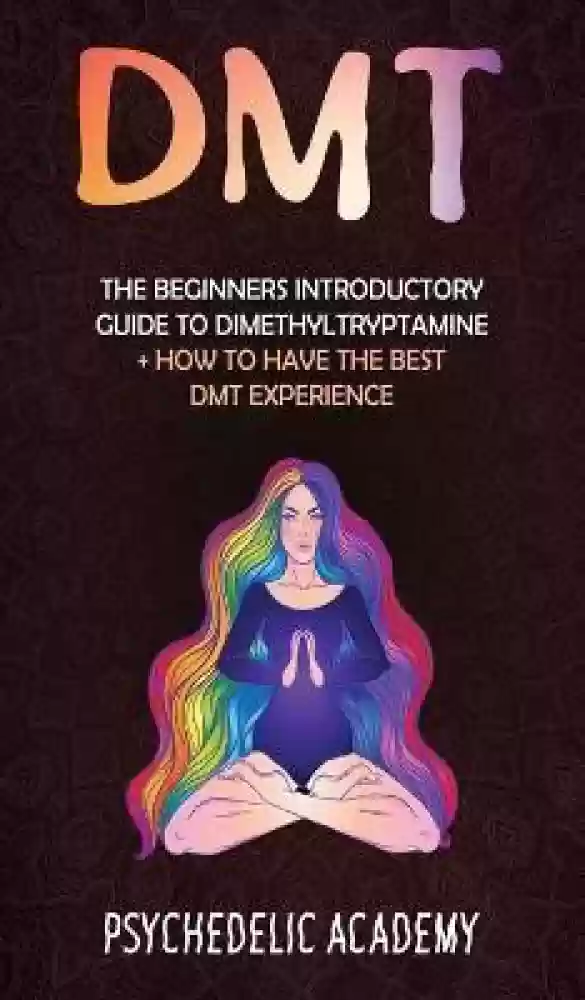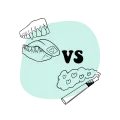The History of DMT: From Traditional Use to Modern-Day Exploration
Dimethyltryptamine (DMT) is one of the most potent and fascinating psychedelic substances known to humanity. Its profound effects on consciousness, perception, and reality have intrigued scientists, spiritual seekers, and indigenous cultures for centuries. The history of DMT spans from its ancient use in spiritual and healing rituals to its modern-day exploration by neuroscientists and therapists. This article delves into the journey of DMT, exploring its traditional uses, scientific discovery, the rise and suppression of research, and its contemporary exploration as a tool for understanding the brain and consciousness. The History of DMT

1. Introduction to DMT
Dimethyltryptamine (DMT) is a naturally occurring psychedelic compound that is structurally similar to serotonin, a key neurotransmitter involved in mood regulation and cognition. DMT is found in various plants and animals, and it also occurs endogenously in the human body. Despite its long history of use in traditional healing and spiritual practices, DMT gained widespread attention in the 20th century for its powerful effects when consumed in large amounts. The History of DMT
DMT’s effects are intense and short-lived, causing vivid visual and auditory hallucinations, and altered time perceptions. Users often report encounters with non-human entities or otherworldly realms. These experiences have made DMT a key subject in neuroscience, psychology, and psychiatry research. The History of DMT
2. Traditional Use of DMT
DMT in Indigenous Cultures: Ayahuasca and Other Plant-Based Brews
DMT’s traditional use dates back thousands of years, especially in the Amazon Basin of South America. Indigenous tribes have used DMT-containing plants in sacred ceremonies. A well-known preparation is ayahuasca, made from Banisteriopsis caapi and DMT-containing plants like Psychotria viridis or Diplopterys cabrerana.. The History of DMT
Ayahuasca has been used by indigenous Amazonian tribes for spiritual and healing purposes. The DMT content in ayahuasca induces altered states of consciousness, communication with spirits, and insights into health. Ayahuasca is a sacred plant medicine, often used under the guidance of shamans or spiritual leaders. The History of DMT
The MAOI in ayahuasca prevents DMT breakdown in the digestive system, keeping it active for hours. The profound visions and spiritual experiences from ayahuasca are integral to indigenous healing and personal growth practices. The History of DMT
Rituals and Spiritual Uses in South America
Indigenous groups in the Amazon have used ayahuasca as a way to connect with the spiritual realm and the ancestors. Shamans often guide individuals through these experiences to help them understand their life’s path, seek healing, and communicate with the spirit world. The visions experienced during these rituals are often seen as messages or guidance, contributing to the individual’s personal transformation. DMT, as part of these spiritual journeys, is believed to facilitate a deeper understanding of the universe and one’s place in it. The History of DMT
In South American traditions, ayahuasca ceremonies are communal events led by a shaman. Groups of people gather to partake in the brew. These ceremonies often include rituals, dances, and chants, helping participants achieve a transformative experience. The History of DMT
3. The Discovery of DMT in Western Science
Early Scientific Isolation of DMT
While DMT had been used by indigenous cultures for centuries, its presence in nature and its effects on human consciousness were not widely known to the Western world until the 20th century. The compound was first isolated in 1931 by the Canadian chemist Richard Manske, who identified DMT as a naturally occurring substance in the plant Mimosa hostilis. However, its psychoactive properties were not immediately understood. The History of DMT
The true potential of DMT remained largely unexplored until the 1950s, when scientists began investigating its hallucinogenic effects. In 1956, chemist Stephen Szara became one of the first to document the psychoactive properties of DMT, conducting experiments on both animals and humans. Szara’s research was pioneering, and it helped establish DMT as a legitimate substance for the scientific community to study. He observed the effects of DMT when administered to humans, noting its powerful visual and sensory alterations, and reported that the compound produced intense mystical and visionary experiences. The History of DMT
Early Studies and Exploration of its Effects
Throughout the 1960s, DMT began to garner more interest as a potential tool for understanding the brain and consciousness. However, with the rise of the psychedelic movement, DMT’s status quickly became entangled with broader discussions about the legality and social acceptability of mind-altering substances. During this time, researchers like Dr. Rick Strassman began to delve deeper into DMT’s potential for altering consciousness and its relationship to spiritual experiences. The History of DMT
Dr. Strassman’s studies in the 1990s, which involved administering DMT to human volunteers in a controlled clinical setting, became some of the most significant research into the substance. Strassman’s work was instrumental in demonstrating that DMT could produce intense, often profound experiences that altered perceptions of reality. His research also suggested that DMT might be related to certain mystical or near-death experiences, raising questions about its role in human consciousness and spirituality. The History of DMT
4. DMT and the Rise of Psychedelic Research
The Role of DMT in the Psychedelic Revolution of the 1960s
The 1960s witnessed the rise of the psychedelic movement, fueled by the popularization of substances like LSD and psilocybin. DMT, often referred to as the “spirit molecule” due to its powerful and otherworldly effects, became a key part of the counterculture’s exploration of the mind and spirituality. The experience induced by DMT was seen as one of the most extreme and transformative among the psychedelics, and its use was often associated with the search for deeper truths and alternate realities. The History of DMT
The increased interest in psychedelics led to more experiments on how substances like DMT affect the brain. However, the association with counterculture movements caused growing opposition from governments and the public. This opposition led to the criminalization of many psychedelics, including DMT, by the late 1960s. The History of DMT
Early Research by Scientists like Dr. Rick Strassman
Dr. Rick Strassman’s 1990s work revived interest in DMT and its potential to reveal hidden consciousness aspects. His study at the University of New Mexico involved administering DMT to volunteers and observing their experiences. The study revealed intense visual and emotional effects, including reports of encounters with entities or beings. The History of DMT
Strassman’s research not only helped to legitimize DMT as a subject of scientific inquiry, but it also opened the door for future studies into its therapeutic applications. His work continues to be influential, shaping modern perspectives on the relationship between psychedelics, consciousness, and mental health. The History of DMT
5. The Suppression and Resurgence of DMT Research
The War on Drugs and Criminalization of Psychedelics
Following the countercultural upheaval of the 1960s, the U.S. government launched the War on Drugs, which led to the criminalization of many psychoactive substances, including DMT. Research into psychedelics was severely curtailed during this period, as public fear and political pressure led to a ban on most psychedelic substances. The History of DMT
Despite this, DMT continued to be used by a small community of spiritual seekers, researchers, and underground circles. The outlawing of psychedelics did not eliminate interest in DMT; rather, it pushed research and exploration into more covert settings. This situation persisted until the 1990s, when a new wave of interest in psychedelics emerged in the scientific community. The History of DMT
The Resurgence of DMT Research in the 21st Century
In recent years, DMT has once again become the subject of scientific exploration. A growing body of research has sought to understand its effects on the brain, its potential therapeutic benefits, and its role in human consciousness. Advances in brain imaging technologies and a greater acceptance of psychedelic research have allowed scientists to investigate DMT’s effects in greater detail. The History of DMT
Studies have looked into the use of DMT as a treatment for various mental health conditions, including depression, anxiety, and PTSD. As the stigma surrounding psychedelics begins to lift, DMT’s potential as a tool for both spiritual exploration and clinical therapy is being recognized more widely. The History of DMT
6. Modern-Day Exploration of DMT
Current Studies on DMT’s Effects on the Brain and Consciousness
Today, scientists are conducting groundbreaking research into how DMT affects brain function, perception, and consciousness. Using tools like functional magnetic resonance imaging (fMRI) and electroencephalography (EEG), researchers have been able to map how DMT alters brain activity, particularly its effects on the Default Mode Network (DMN) and areas responsible for sensory processing. The History of DMT
Researchers are also investigating the relationship between DMT and altered states of consciousness, with many studies suggesting that DMT could provide valuable insights into the nature of reality and human perception. The question of whether DMT might help explain mystical or near-death experiences remains The History of DMT
4o mini

